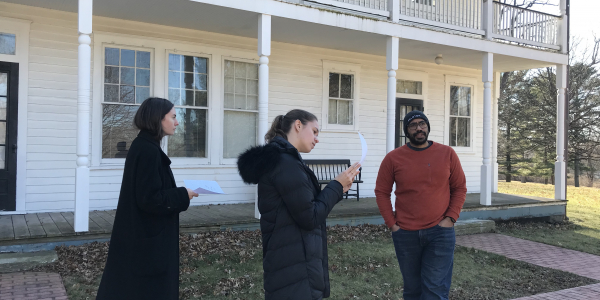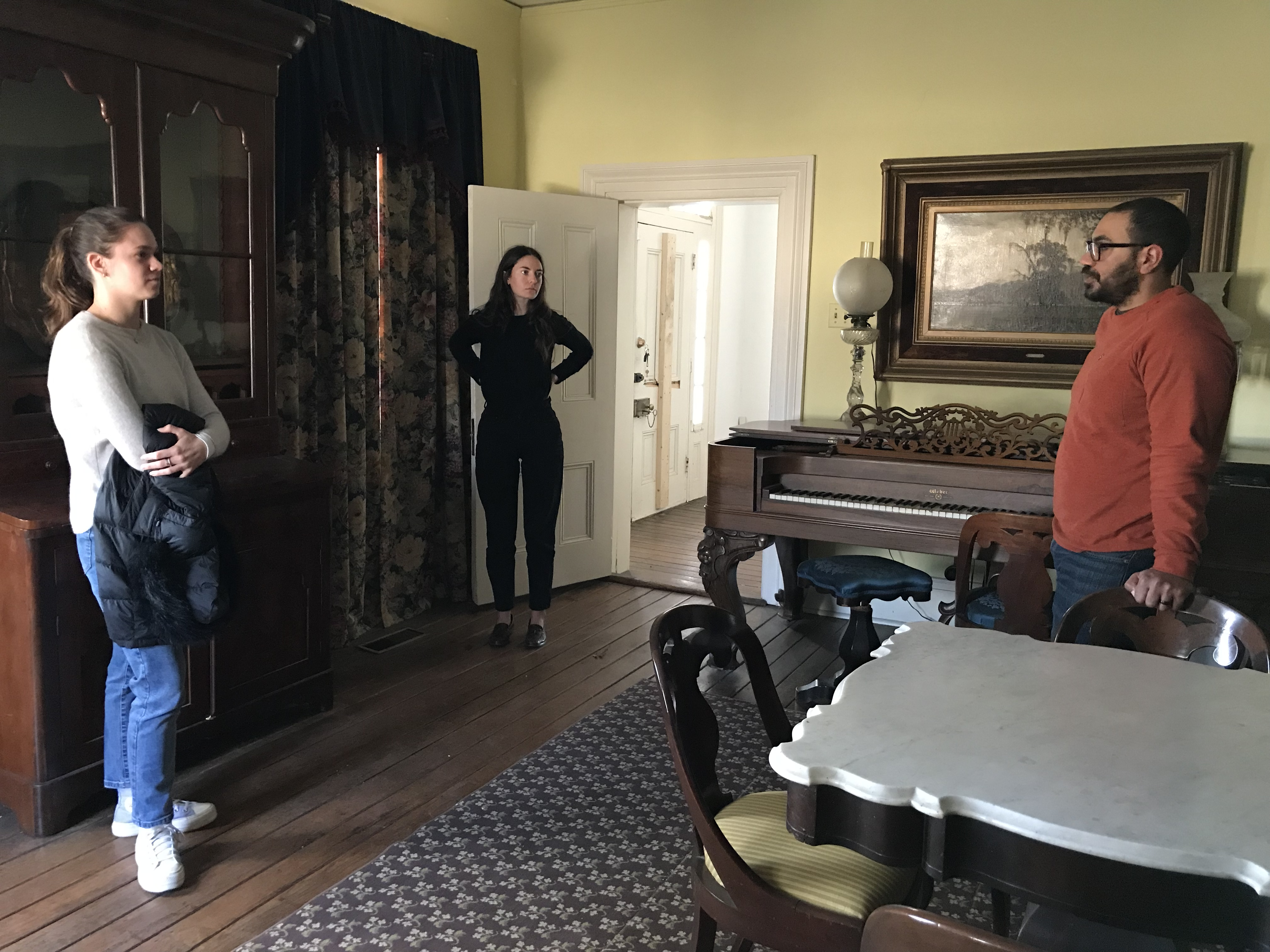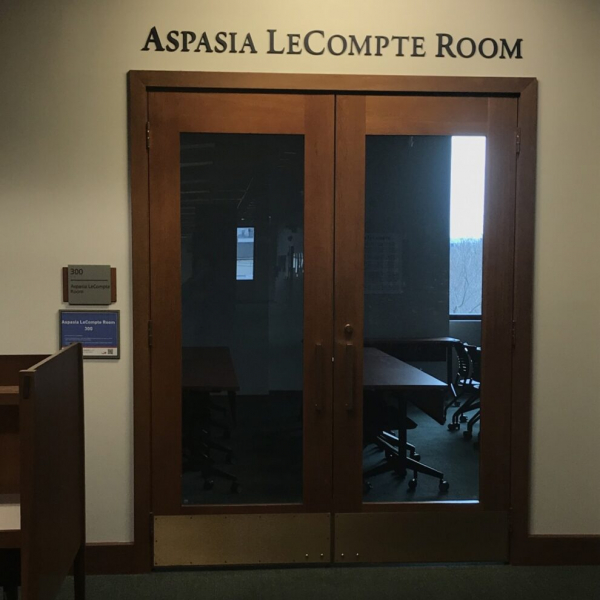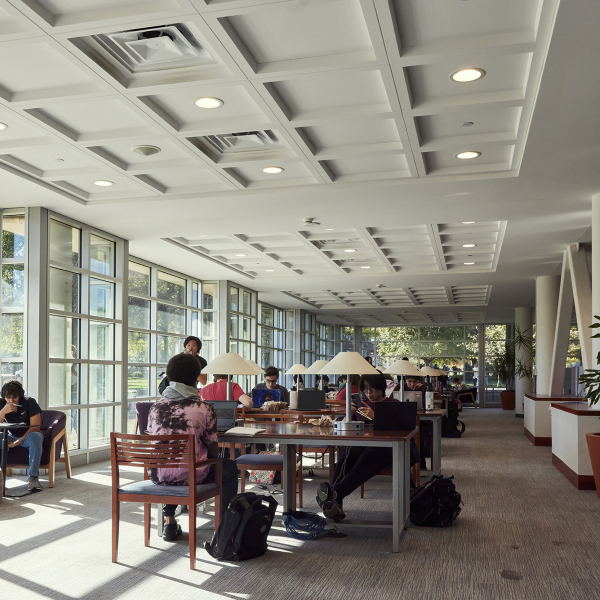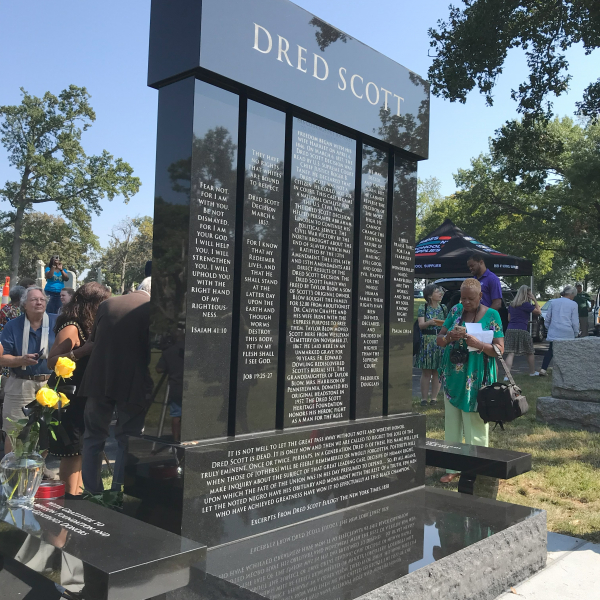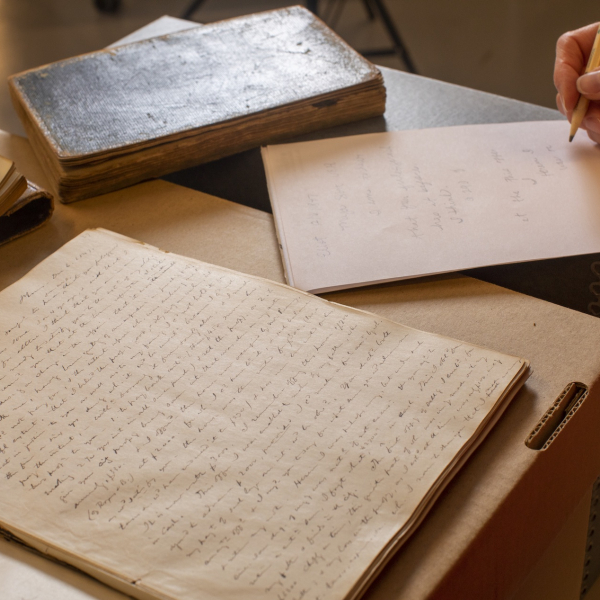The WashU & Slavery Project is working in partnership with public historians and education specialists at St. Louis County Parks to elevate stories of enslavement in St. Louis County. The partnership is currently focused on interpreting slavery at the General Daniel Bissell House, located on Bellefontaine Road in the Bellefontaine Neighbors neighborhood in North St. Louis County.
General Daniel Bissell House. Photo by Kelly L. Schmidt, February 2023.
Bellefontaine Road leads northward from General Daniel Bissell’s home to Fort Belle Fontaine, which Bissell managed from 1809 to 1821. The fort was a stopping point for the Lewis & Clark Corps of Discovery in 1804 and Fort Belle Fontaine was established there the following year as a trading post where Native Americans and French, Spanish, and American settlers, trappers, traders, and military personnel gathered.
Daniel Bissell had enslaved people build his family home on the estate he named Franklinville Farm between 1812 and 1820. Enslaved people provided much of the labor in building and operating the Franklinville plantation; their own quarters stood just to the north of the current boundaries of the park. The enslaved quarters were demolished in the early 20th century.
Five generations of the Bissell family lived on the property for nearly 150 years, before donating the house to St. Louis County in 1961. The Bissell House was made into a historic house museum and was placed on the National Register of Historic Places in 1978.
Tours and programming at the house have historically focused on the home’s furnishing and the influence of the Bissell family in St. Louis. However, St. Louis County Parks has recently committed to interpreting the property’s history of enslavement. “It is important to shed light on a complicated history that was overlooked and give voices to those who were largely forgotten. The enslaved living in Missouri were part of the population and altered the society in the process,” says Jeffrey Edison, Museum Educator for St. Louis County Parks. “The goals of this project are to give visitors a more accurate representation of the people who lived on Franklinville Farm. We often tell the story of General Daniel Bissell and his military career, but the enslaved are often left out of his narrative or mentioned only in passing. Previous historians gave a small glimpse of this history, and we want to expand that further.” Edison describes some of what is already known about enslavement at Franklinville Farm in a February 2023 YouTube Video, making reference to the Parks’ partnership with Washington University.
During the spring 2023 semester, Washington University Senior Sandra Meszaros (‘23) is conducting research about slavery on the Bissell property for “Slavery and Public History,” a seminar taught by Dr. Kelly L. Schmidt, Postdoctoral Research Associate for the WashU & Slavery Project. The course focuses on teaching best practices for engaging public audiences in learning about the history and legacies of slavery with particular emphasis on interpretation of the history of enslavement in St. Louis. The seminar is project-oriented, providing student opportunities to work with clients from local history or cultural heritage institutions on a project that will have a tangible and meaningful presence in the community. Meszaros’s task is to create three interpretive panels that tell the stories of the Bissells and the people they enslaved, which will be installed on the Bissell property grounds. “My goals with this project are to elucidate the role of slavery at Bissell House and in St. Louis more generally,” says Meszaros. “I aim to highlight how negotiations of power, forms of resistance, and the cultural practices of enslaved people should direct how we interpret this historic site. I hope that this project can facilitate interactions between community members and African American history. Further, educating viewers on the role of slavery in St. Louis will be really valuable in shifting the historical narrative to accurately reflect slavery's influence on the region.”
Edison emphasizes that the project is one that is beneficial for all involved: “This is a great partnership opportunity because historians get to collaborate on an important project for the community. Students receive the benefit of learning about local and state history. They get to see their results at the end of the semester and know that visitors will be impacted by their research.” Meszaros likewise values that applying what she has learned will have reach beyond the classroom: “I love how this course allows students to learn about a variety of topics while working toward creating something impactful in our community. As someone with a biology and African and African American Studies background, I was excited to complement my interests with new skills and contribute to the changing focus of interpreting slavery in St. Louis. Partnering with St. Louis County Parks and Recreation to create interpretive panels at Bissell House has been an incredible learning experience and I am excited to see my work come to life. Learning how to uncover and interpret these previously untold stories about the experiences of those who were enslaved at Bissell House has been exceptionally rewarding.”
WashU student Sandra Meszaros, and St. Louis County Parks staff, curator Kelly Plunkett and museum educator Jeffrey Edison, discuss the history and interpretation of General Daniel Bissell House in one of the home’s parlors. Photo by Kelly L. Schmidt, February 2023.
Meszaros and Schmidt visited the Bissell House with Parks staff in February, discussing the history of Bissell House and plans for the interpretive panels. Meszaros has since been combing through records about the Bissells and the people they held in slavery in area archives such as the Missouri History Library. Her research is expanding what we currently know about the people enslaved by the Bissells, how their skills and labor enhanced the Bissells’ wealth and influence, and the many ways in which they resisted their enslavement and sought freedom while members of the Bissell family tried to stop them. “I am continuing to learn ways that artifacts can be interpreted to reveal roles, resistance, and culture on the plantation, which I hope to reflect on in the interpretive panels,” says Meszaros. Meszaros will present her panels to St. Louis County Parks clients and other reviewers at the end of the semester.
The Bissell House is currently only open for tours by appointment, but the interpretive panels will provide a first step toward reinterpreting and reopening the house to tell the history of enslavement in North County through the history of the people who lived and labored on the Bissells’ plantation. St. Louis County Parks plans to open the house later this year and to develop a new tour that emphasizes the experiences of enslaved people.

